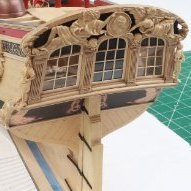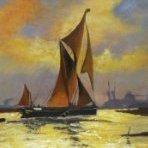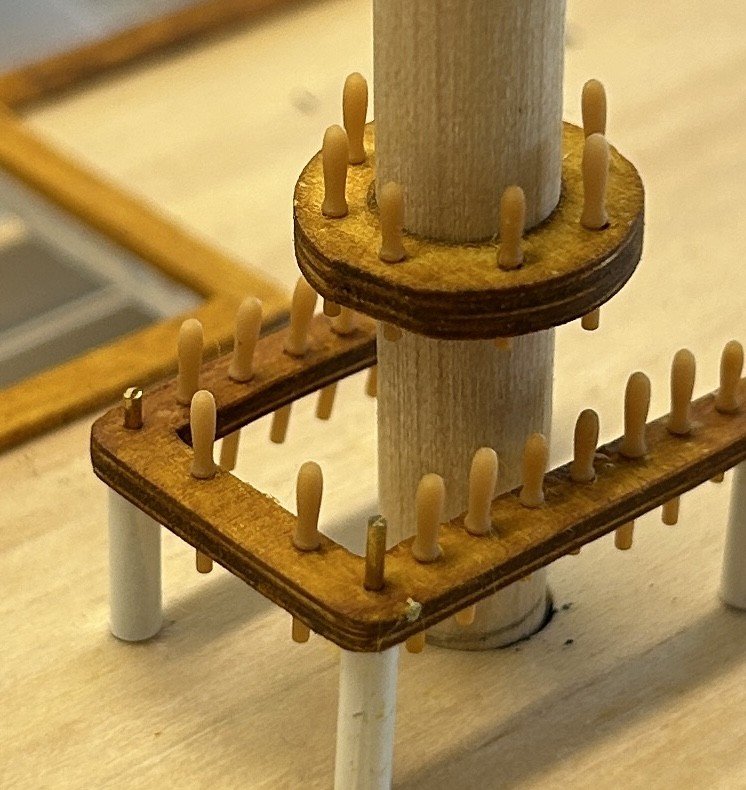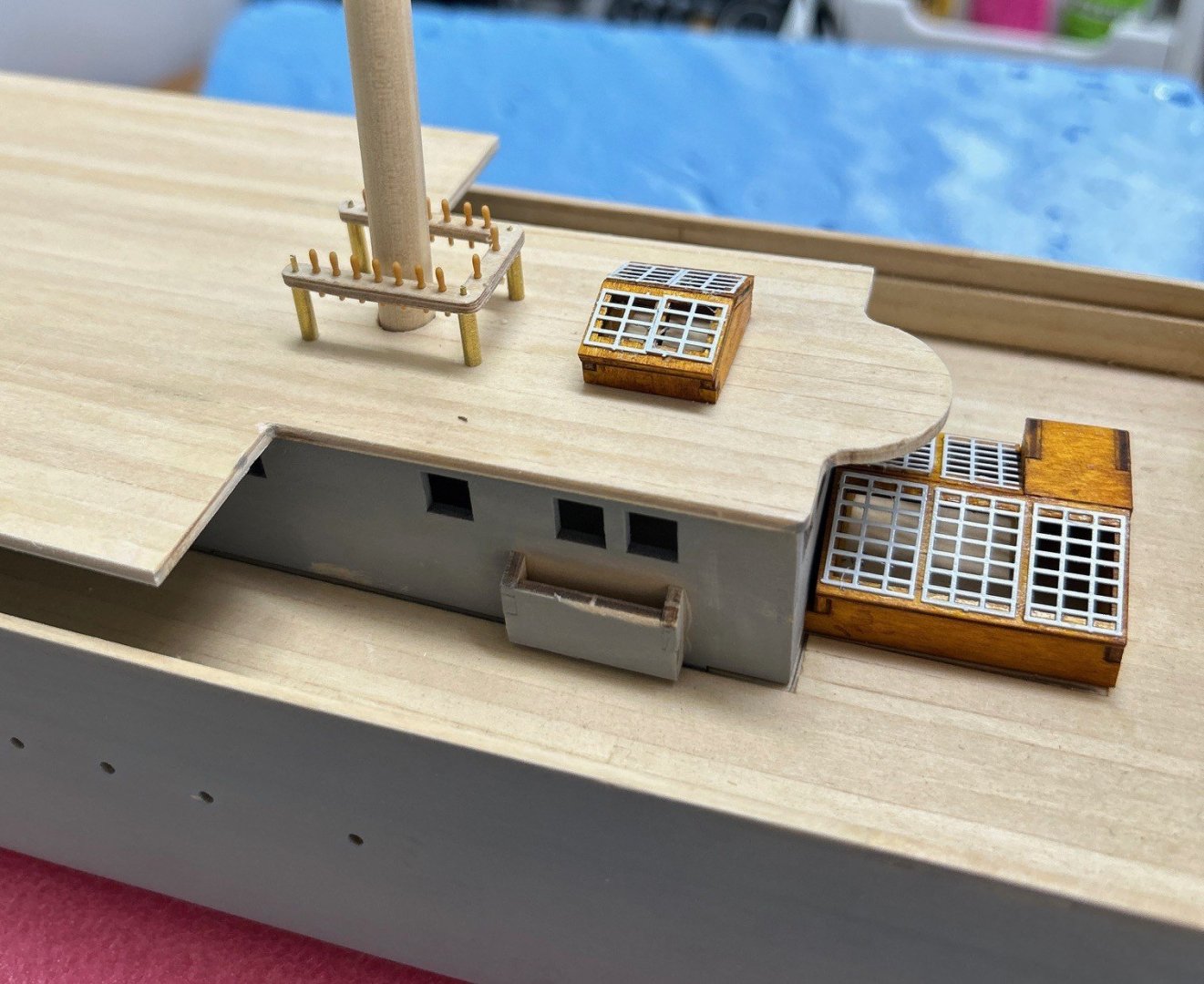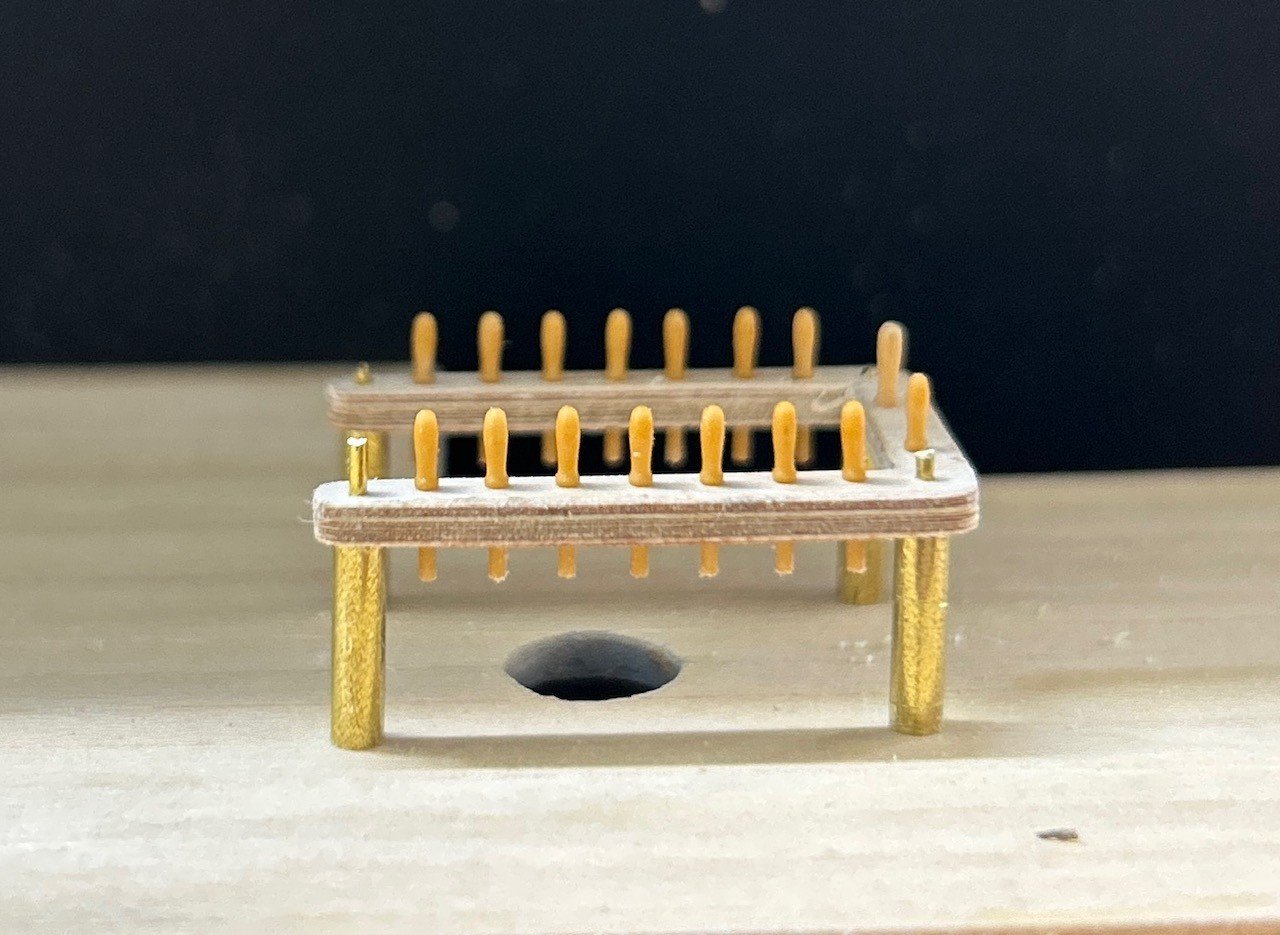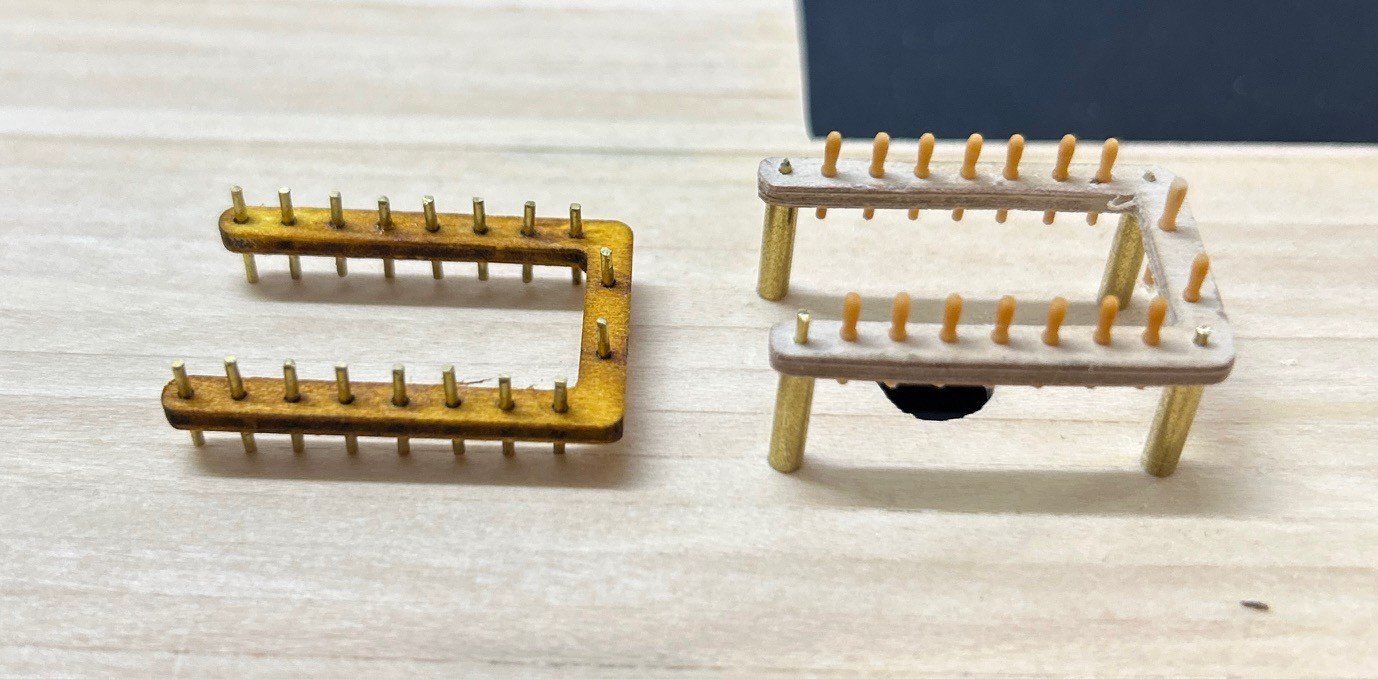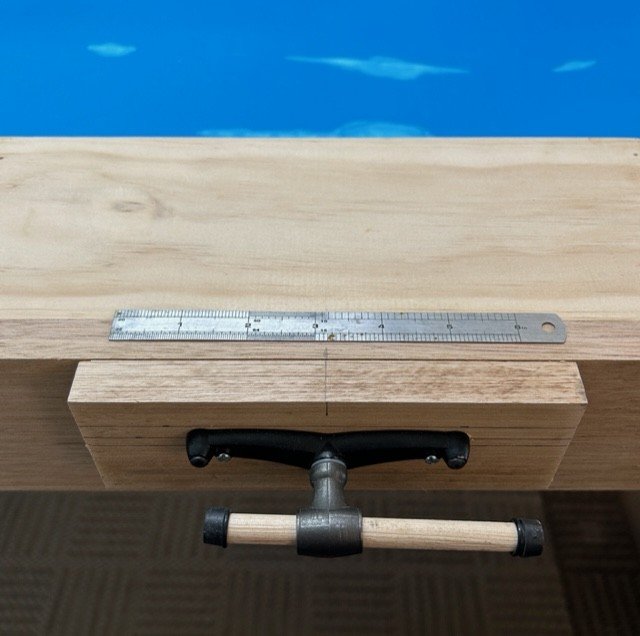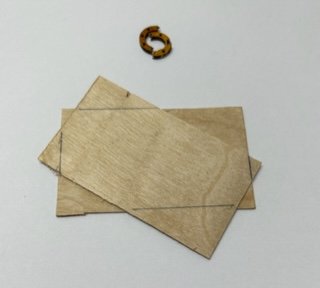
TannumIan
Members-
Posts
35 -
Joined
-
Last visited
Profile Information
-
Gender
Male
-
Location
Tannum Sands
Recent Profile Visitors
-
 Admiral Rick reacted to a post in a topic:
Recommended First Machine
Admiral Rick reacted to a post in a topic:
Recommended First Machine
-
 Canute reacted to a post in a topic:
Recommended First Machine
Canute reacted to a post in a topic:
Recommended First Machine
-
 bruce d reacted to a post in a topic:
Recommended First Machine
bruce d reacted to a post in a topic:
Recommended First Machine
-
 Chook reacted to a post in a topic:
Recommended First Machine
Chook reacted to a post in a topic:
Recommended First Machine
-
Recommended First Machine
TannumIan replied to vvvjames's topic in Modeling tools and Workshop Equipment
-
 yvesvidal reacted to a post in a topic:
BELEM by TannumIan - Artesania Latina - 1:75
yvesvidal reacted to a post in a topic:
BELEM by TannumIan - Artesania Latina - 1:75
-
 ccoyle reacted to a post in a topic:
BELEM by TannumIan - Artesania Latina - 1:75
ccoyle reacted to a post in a topic:
BELEM by TannumIan - Artesania Latina - 1:75
-
 TerryPat reacted to a post in a topic:
BELEM by TannumIan - Artesania Latina - 1:75
TerryPat reacted to a post in a topic:
BELEM by TannumIan - Artesania Latina - 1:75
-
I have had a break from the BELEM after mast pin rails and the ladder PE parts crumbled. Moving on, I have painted the hull and prepared most of the deck parts for final assembly. While waiting for the new PE ladders to arrive I built some out of scrap timber. I will use the brass ladders as this is closest to the full size ship - photos seem to show brass treads. The mast pin rails were made from 3 layers of 0.5 plywood. The larger Syren belaying pins look the best even though they are a bit oversize. The final ladders will be the brass treads glued to the original side rails. The plastic parts trays were money well spent to keep all the parts neat and tidy.
-
Replace Pin Rails and fit Syren Belaying Pins The existing ply pin rails have been replaced with laminated 0.4mm ply. I used 3 layers of 0.4mm ply that were each rotated 120° and glued with Titebond. The resulting board was very stiff with no weakness in any direction and could be worked without any tear out. Mounting posts were made from 1/32" brass rod and concentric sleeves to make an overall 3/32" diameter post. The pin rails were finished with Syren 1:64 Belaying Pins. This is the AL version of pin rails and the new laminated plywood pin rails. I made the posts from brass as I had the material and it easy to work and fit. Fitting the posts to the deck was easy to align by drilling through the rail and deck together and inserting a brass pin to hold the rail position while the other holes are drilled. Then just insert the brass sleeves to complete the posts. The end result is now presentable but I will give the timber pin rails a slight reduction in size before final painting and fitting.
-
This build stated as a learning exercise with the end result being a throw away. This is no longer the case and I will aim to build a ship that presentable to most people. After completing the hull and starting the deck it became apparent that I had to educate myself to have a deeper understanding of the deck and rigging construction. Then there is the replacement of the smaller parts laser cut from plywood that are weak, unusable and look terrible. Pin rails and belaying pins The kit provided 2mm plywood for the rails and 0.8mm brass for the belaying pins. I will replaced these with walnut rails and the Syren belaying pins. Rope I purchased the Syren Rope Maker and some Gutermann Mara121 and Mara151 thread from Ropes of Scale. These treads can produce 3 strand ropes from 0.010" to 0.060". I have yet to experiment with the 4 strand rope. With a little practice and experimenting making rope is easy. It is also a good talking point. The Chuck Pasaro YouTube videos are the most concise resource while the forums have a bit more theory and alternatives (but be prepared to go down a rabbit hole). Rigging and fittings There plenty of excellent resources available with the forums and books. I have 2 books that show the rigging systems in detailed sketches. They are The Rigging of Period Ship Models A Step-by-Step Guide to the Intricacies of Square-Rig by Lennarth Petersson Rigging Period Fore and Aft For fittings I purchased the Syren blocks.
-
I use a homemade jig that clamps the bottom 2.5mm of the plank. This is was a pain to use until I added the springs to open the clamp. To shape a plank I use the miniature Veritas Block Plane. This plane has become one of my used tools. And I am currently making a vice that uses the miniature Veritas Bench Vice.
-
An option is to make new parts out of laminated 0.5mm (0.020") birch plywood. Only glue together once the laminated parts are bent in position or close to it. Here is my replacement plywood of some pin rails that broke. Ian
- 17 replies
-
- Swift
- Artesania Latina
-
(and 1 more)
Tagged with:
-
 TannumIan reacted to a post in a topic:
Kits to start with and avoid?
TannumIan reacted to a post in a topic:
Kits to start with and avoid?
-
For something different, I am building the smaller parts into final assemblies. Below are the hatches and light/vent boxes. The PE parts are stainless steel and much easier to work than brass that must be annealed to avoid work hardening and cracks. Paint finishes are a regular topic so I have included what I used on the PE parts - generally what I have for the plastics car models. The SMS Etch Primer was the first coat on the metal followed by grey surface primer and then white lacquer. I have always used Mr COLOR Leveling Thinners for lacquer and acrylic paints. The leveling thinners was a game changer for my car finishes where a little sanding with 1500 - 5000 grit sandpaper before the cutting polishes produces an excellent result.
-
CHANGE of PLAN I started this build as a learning exercise as it had plenty of planking and rigging. The end result was not expected to be that good and would have probably ended up in the bin. However, the hull when painted will be satisfactory so I have decided to keep the model when finished. To that end I have acquired an old AL Virginia kit that I will use for some rigging practice and hopefully do a reasonable job of the BELEM rigging. Progress so far has been fairing the hull and making some of the smaller components. I have decided against trying to paint a timber finish onto the plywood parts and just used some Golden Teak stain for the finish. Next steps are the decking and preparing the hull for paint. I have to find a way to airbrush the port holes without sending them into some endless orbit. The plan is to use an etch primer before the main color.
-
 TannumIan reacted to a post in a topic:
What tools are most useful - what should I buy next?
TannumIan reacted to a post in a topic:
What tools are most useful - what should I buy next?
-
A major milestone is reached - Planking is now complete so the filling and final fairing can start. I have placed the cabin and masts in position to get an idea of the hull shape. This is a feel good look rather than any build planning. In 50 years of modeling this is the most challenging item I have made. Like balsa, sharp tools are a pre-requisite to aid in the best outcome to any wood machining. I have read in build logs to treat every plank as an individual project. This is so true. Tonight will be spent studying the manual to determine all the holes that require drilling in the hull. I think it will be be best to do now rather than later. The stern has nice curves. The 2mm² planks were very flexible after some steam treatment and only required rubber bands to hold them in position while the glue dried. My wood filler has suffered from old age so tomorrow I am off to Bunnings (aussie Home Depot) for some Poly filler.
-
The hull planking is divided into 3 bands of 5 planks. Full width planks of 5mm will taper to 3.6-4.0mm at the stern and stem. As this is my first planking effort, the bands around the keel will be fitted first where they are least visible. I have finished the planks with thinned Wattyl sanding sealer to stop any dirt and grime buildup on the timber before fairing the hull. This sanding sealer powders well when sanded without clogging the sandpaper. The next big job is to build a quick release plank vice. The vice shown below is slow and tedious to use. The Veritas Miniature Block Plane shapes the planks with ease until you meet some of that curly grain. I keep the curly grain planks for straight lengths as it refuses to bend and be seated with accuracy. While this jig is functional, it is slow to get the plank out for measurement and back to the jig. I have some of these toggle clamps to use in the new plank jig. Hopefully I will get this done before XMAS when the noise and time constraints start.
-
An invaluable tool. This old low angle plane was sharpened to 2000 grit using a Veritas sharpening jig. The plane was also flattened on a sheet of glass and many sheets of 400-800 sandpaper. Notice the fine shavings from the planks that were trimmed. The plane will be used to tapper the planks as the finish if far better than a knife or sandpaper. For curved planks the Veritas Miniature Low Angle plane is an excellent plane. Ready for lining out and planking.
About us
Modelshipworld - Advancing Ship Modeling through Research
SSL Secured
Your security is important for us so this Website is SSL-Secured
NRG Mailing Address
Nautical Research Guild
237 South Lincoln Street
Westmont IL, 60559-1917
Model Ship World ® and the MSW logo are Registered Trademarks, and belong to the Nautical Research Guild (United States Patent and Trademark Office: No. 6,929,264 & No. 6,929,274, registered Dec. 20, 2022)
Helpful Links
About the NRG
If you enjoy building ship models that are historically accurate as well as beautiful, then The Nautical Research Guild (NRG) is just right for you.
The Guild is a non-profit educational organization whose mission is to “Advance Ship Modeling Through Research”. We provide support to our members in their efforts to raise the quality of their model ships.
The Nautical Research Guild has published our world-renowned quarterly magazine, The Nautical Research Journal, since 1955. The pages of the Journal are full of articles by accomplished ship modelers who show you how they create those exquisite details on their models, and by maritime historians who show you the correct details to build. The Journal is available in both print and digital editions. Go to the NRG web site (www.thenrg.org) to download a complimentary digital copy of the Journal. The NRG also publishes plan sets, books and compilations of back issues of the Journal and the former Ships in Scale and Model Ship Builder magazines.

